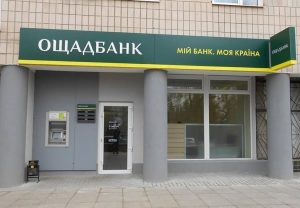
The National Bank of Ukraine expects that the majority of Ukrainian banks will be able to independently restore capital after military losses thanks to future profits, but the rest may require additional capitalization from the shareholder.
“In particular, this is a possible scenario for several state-owned banks,” the NBU noted in its Financial Stability Report.
The regulator indicated that during the crisis it will not apply measures of influence to banks for violating capital requirements.
“At the same time, at this stage, it is important that banks reflect credit losses in a timely manner. This will give the NBU a correct idea of the state of the market for making further regulatory decisions, in particular, adjusting the regulatory easing regime,” the document says.
It does not specify which state-owned banks are in question, but indicates that some state-owned banks “failed” in terms of capital.
According to the report, of the 20 largest banks, they show sufficient resistance to the loss of 30% of the loan portfolio of financial institutions, which collectively own more than half of the assets of the top 20.
“If we add the share of state-owned banks that “failed” in terms of capital, but have unconditional support from the state, then it can be argued that banks with 82% of the assets of the 20 largest have sufficient resistance to such an extremely conservative macroeconomic scenario,” said the National Bank.
The regulator added that banks that consistently generate negative operating cash flow from core activities during the crisis will be subject to close supervision and their activities will, under certain circumstances, be restricted to protect depositors.
The NBU pointed out that the negative impact of the current crisis will stretch over time – it will be possible to assess its consequences relatively accurately only after stabilization of macroeconomic conditions. At the same time, the National Bank will assess the quality of assets in order to reliably estimate the level of losses, while the viability of banks will be assessed separately, that is, the ability to normalize financial indicators in the foreseeable future.
Given the level of losses, a sufficient period will be determined for the banks to restore capital, possibly several years, the report says. Banks will have to develop capitalization and asset restructuring plans.

The Cabinet of Ministers at a meeting on September 2 updated the principles of strategic reform of state-owned banks, which envisage reducing the state’s share in the banking sector from 60% to 25% by 2025 through partial or full privatization of each of the four state-owned banks.
According to the text of the corresponding document, posted on the website of the Ministry of Finance, the state plans to find a minority investor for Ukeximbank with potential privatization in the long term.
In addition, the Cabinet of Ministers kept plans for the state’s withdrawal from PrivatBank’s capital in the future, as well as for converting a loan from the International Finance Corporation (IFC) of the World Bank into additional capital of Ukrgasbank. In particular, it is planned that an agreement between the IFC and Ukrgasbank will be concluded by October 2020.
The principals of strategic reform of state banks also indicate that at the moment the state is creating all the necessary prerequisites to ensure the entry of international financial organizations into the capital of Oschadbank by the end of 2020, in particular in October 2020 the latter is planned to enter the Deposit Guarantee Fund.
According to the government’s expectations, the participation of international financial organizations in the capital of Oschadbank will lead to a major or full privatization of the bank by the end of 2025.
The corresponding document also specifies that preparations for the state’s withdrawal from the capital of the banks will begin after the end of the “coronavirus crisis” and the achievement of a stable economic recovery (GDP growth over two quarters), but no later than December 2021.